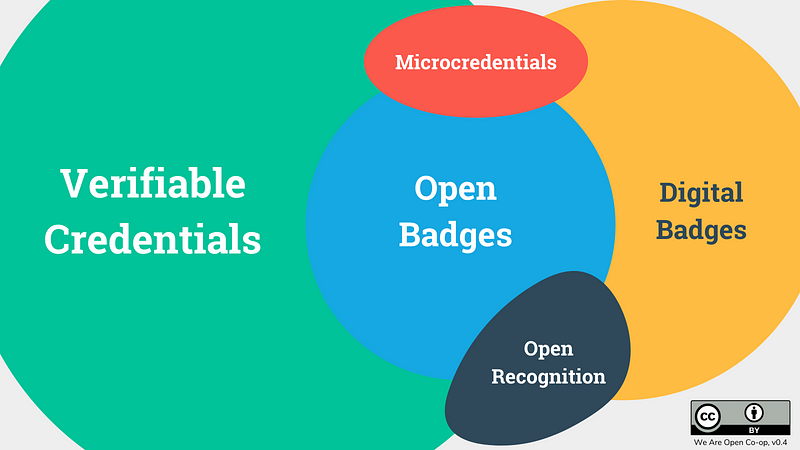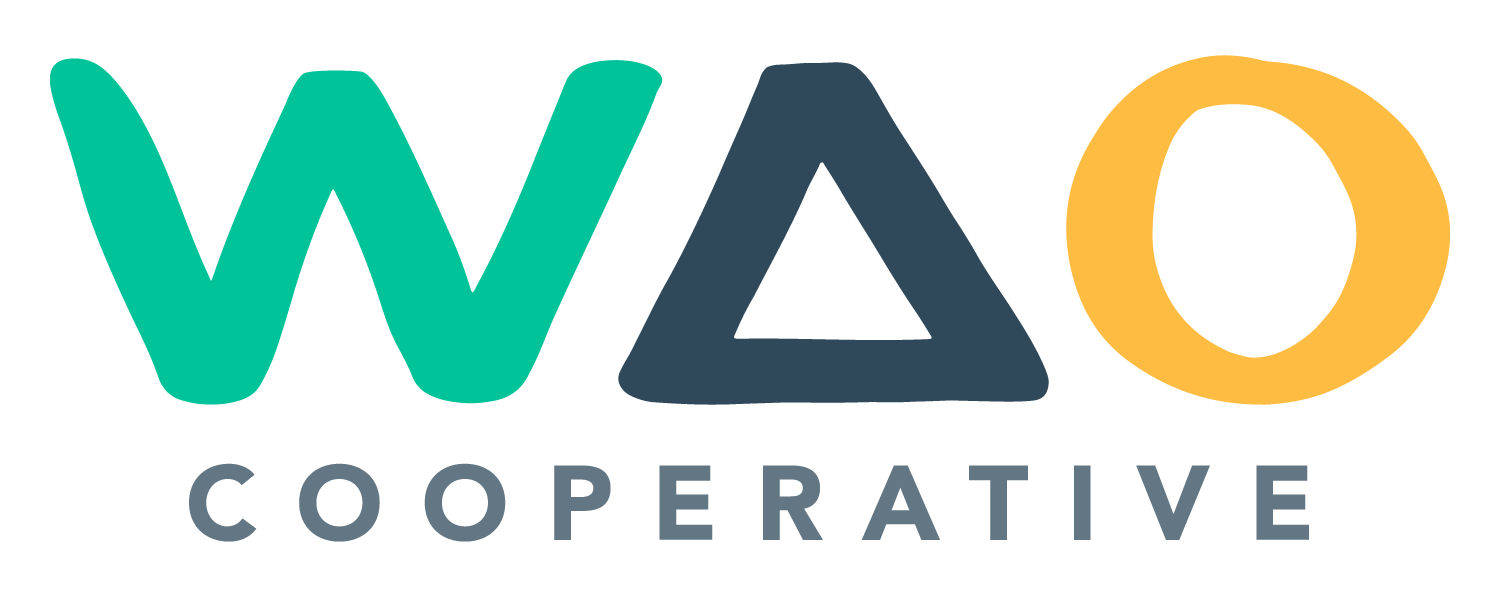Reflecting on the Evolving Badges and Credentials Ecosystem
Technical and philosophical differences around recognition

Recently, the WAO team took the opportunity to update the badge platforms page on Badge Wiki, a knowledgebase for the Open Badge community. As the ecosystem continues to evolve we’re seeing some early platforms fall by the wayside and new platforms emerge. This is to be expected after a decade of maturity.
The image at the top of this post is a simple visual explanation of how the ecosystem is changing as we move towards version 3.0 of the Open Badges standard. It builds on work by Don Presant, which itself builds upon work by our members.

Let’s define terms
- Verifiable Credentials — “an open standard for digital credentials. They can represent information found in physical credentials, such as a passport or license, as well as new things that have no physical equivalent, such as ownership of a bank account.” In other words, Verifiable Credentials can be used for pretty much anything from something showing you turned up to an event, through to your passport or driving license.
- Open Badges — a “standard [which] describes a method for packaging information about accomplishments, embedding it into portable image files as a digital badge, and establishing an infrastructure for badge validation.” In other words, a visual, provable way to represent a skill, relationship, or identity.
- Digital Badges — “a validated indicator of accomplishment, skill, quality or interest that can be earned in various learning environments.” In other words, a visual image which represents something on a platform. It may or may not be based on a standard which makes sense outside of that platform.
- Microcredentials — “a qualification [focused on] a specified professional or career discipline and typically comprises one or more sources of accelerated educational experiences.” In other words, an ‘umbrella’ term used mainly in Higher Education to refer to new forms of recognition of learning.
- Open Recognition — the use of Open Badges and other technologies “to build an open and learning society, based on the recognition of the talents, skills and aspirations of individuals, communities and territories.” In other words, using badges in ways that are different to using them only as ‘credentials’.

What’s the technical difference?
Open Badges and Digital Badges are both visual. Without some kind of image to represent them, they do not exist. Verifiable Credentials, on the other hand, may use images, but do not have to. This changes how they can be used, and how they are likely to be used. Organisations may choose to validate skills in a way akin to a database rather than an eportfolio.
Another difference is with the underlying metadata standard. Version 3.0 of the Open Badges standard aligns with the Verifiable Credentials standard, with both providing a way to validate authenticity. The great thing about the move to Verifiable Credentials is that decentralised identifers can be used (as well as email addresses) to identify recipients. This is much more sustainable in the long term, and foreshadows developments that we’ll see around digital identify before 2030.

What about Microcredentials and Open Recognition?
Universities and colleges deal in ‘credentials’ so the word ‘microcredential’ is attempt by post-compulsory formal education to make sense of the new world of recognition and credentialing.
A ‘microcredential’ is simply a friendly term for something which is technically identical to an Open Badge, Blockcert (Open Badge on the blockchain), digital certificate, or any other form of representing achievement. A microcredential is not a separate technical standard.
Likewise, Open Recognition is not a separate technical standard but rather a philosophical position about the nature of recognition in society. It continues the aim for ‘lifelong learning’ that was embedded in the original Mozilla Open Badges whitepaper, and is somewhat at odds with the idea of a ‘credential’.
Instead of credentials being bestowed upon individuals by institutions, Open Recognition seeks to “create the conditions for individuals to be in control of their own recognition, to establish their identity and agency, whether formally (within institutions) or informally (across communities).”
Some in the Open Recognition community are concerned about the move to align Open Badges v3.0 with the Verifiable Credentials standard. For example, in the Keep Badges Weird community (a project WAO is working on with Participate), Serge Ravet comments:
Do VCs provide a significantly better answer to the “currency” of a claim than Open Badges? I remain to be convinced. IMO, Open Badges are good enough, and as the old saying goes: if it’s ain’t broken don’t fix it!
Philippe Petitqueux goes further, wondering whether a move from human-based trust to machine-based ‘trust’ is worthwhile:
Badges are a medium to make visible a lot of things, including aspirations, passions, talents, commitments, resources, skills, recognitions…if you want to use verification functions for certifications, why don’t you use the VC without putting badges in it, or use a blockchain. An Open Badge should live, not gather dust in a drawer.
And if a badge is fake, it’s up to the humans to say so, the humans in the community of practice or professional who can spot a crook. That’s what endorsements are for. It’s amazing that in open badge projects, especially American ones, I don’t see any use of endorsements. Why is that? But I don’t know every project and I could be wrong.
Philippe’s comparison of the system he knows best (in France/Europe) compared to the “American ones” is telling. Different countries and cultures have varying expectations when it comes to education, skills development, and the recognition of learning.

Summary
So far, Open Badges up to v2.1 of the standard has accommodated a wide variety of use cases. The move to v3.0 is a decisive move towards the ‘credentials’ end of the spectrum, perhaps to the detriment of those seeking to focus on ‘recognition’.
It remains to be seen whether Verifiable Credentials can eventually help represent the entire spectrum of use cases which has enabled the Open Badges community to flourish. The challenge here is partly technical, but it’s also philosophical: what does it mean to represent yourself online?
Why not join the discussion in the Keep Badges Weird community and share your thoughts?

Badge texture image CC BY-ND Bryan Mathers

Discussion